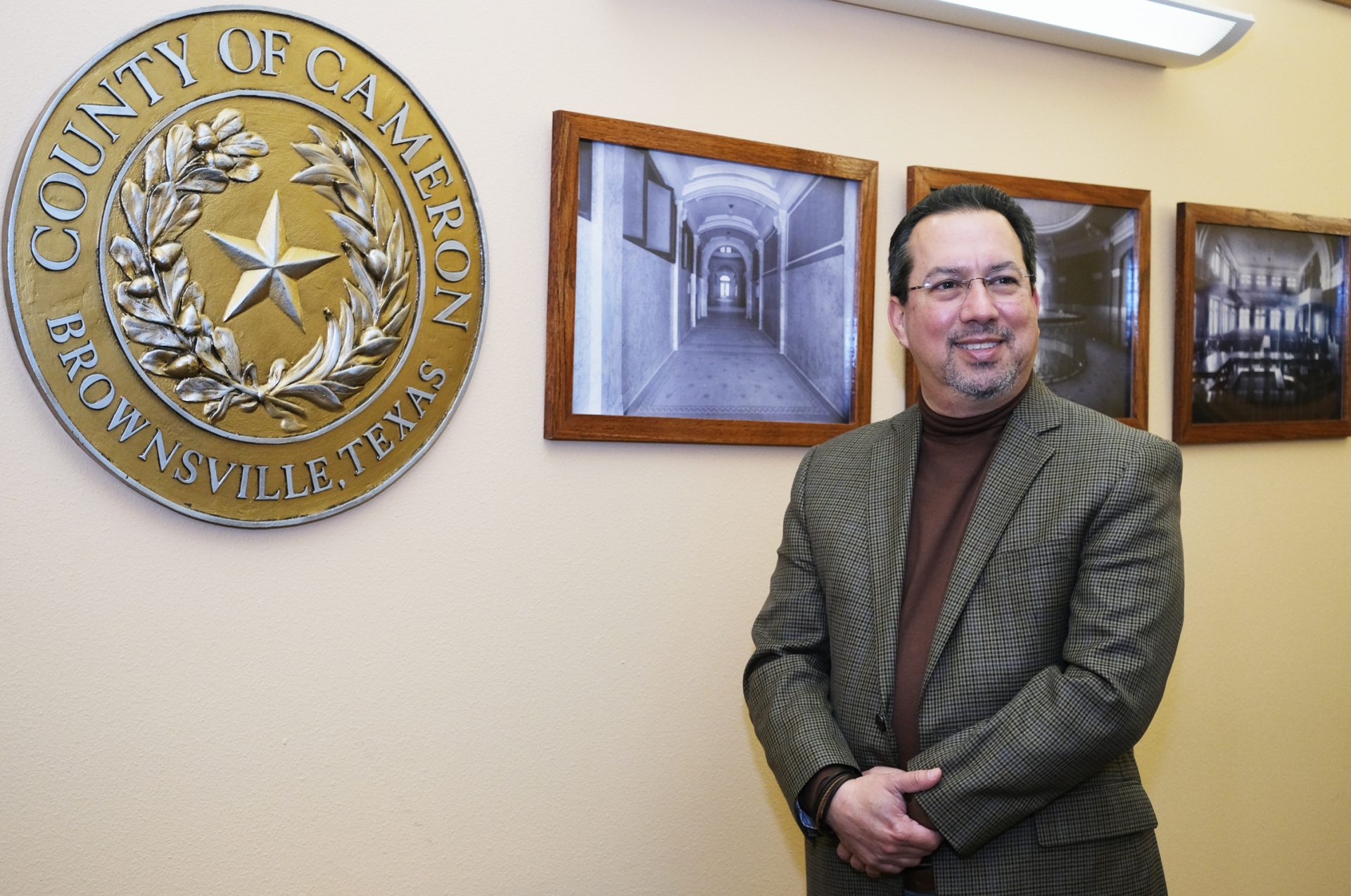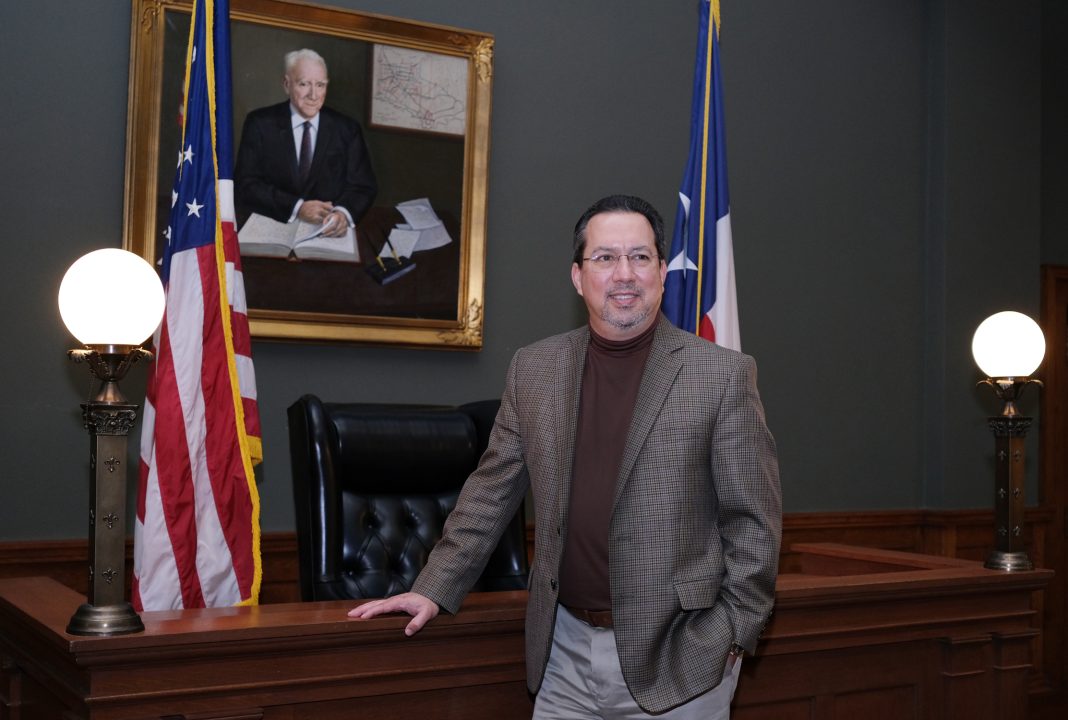Now that he’s won reelection for another four-year term, Cameron County Judge Eddie Trevino Jr. has plenty items on his to-do list.
Trevino spoke with the Brownsville Herald recently about a few of his priorities over the next four years. They include long-term projects and initiatives already underway as well as those just getting started, such as the push for countywide broadband internet access. On that score, the county has already hit a bump, which it’s in the process of addressing, he said.
The problem is an “extremely faulty” statewide broadband connectivity map put out by the state, Trevino said.
“Basically the map that they prepared, if you took it at face value, it basically said that the county and the (Rio Grande) Valley as a whole are well served by the existing technological infrastructure with regards to broadband access,” he said. “All of us know that that’s totally bogus.”
The pandemic, which forced classrooms to go virtual and created an overnight need for high-speed internet access, underlined how far behind the county is in terms of broadband, Trevino said. The state’s inaccurate map, meanwhile, appears to assume that the Valley is adequately served because most residents have a cell phone, he said.
The Bipartisan Infrastructure Law, signed into law by Joe Biden in November 2021, includes more than $42.4 billion to expand nationwide access to high-speed internet. The county hired a consultant to write a broadband plan, submitting it as part of the county’s application for a share of the federal money.
The state’s faulty broadband map certainly doesn’t help, and the county has formally requested a correction in a letter to the state and the Federal Communications Commission, Trevino said.
“I think they’ve realized the potential inaccuracies that the map currently has. … We’re trying to make sure the application contains accurate information and that it’s part of the review process,” he said. “That way we can get our application approved and get money. Obviously our focus is countywide, so a lot of that is rural, and we want to affect as many people as we possibly can.”
Drainage is another pressing issue, Trevino said, adding that the county is working with drainage districts in a way it hasn’t in the past.
“We’ve tried to find the legislation that’s going to help us have some resources to address those areas that are not currently covered by the drainage districts, which of course happen to be the more problematic areas, the most low-lying, the most flood-prone,” he said.

Cameron County is conducting a regional drainage study with Hidalgo and Willacy counties, which makes since Hidalgo’s floodwaters end up in Cameron, and northern Cameron County’s flow to Willacy, Trevino said.
“I’m a firm believer in working on a regional basis to address regional issues,” he said. “Flooding, drainage: Those are regional.”
Transportation projects likewise loom large on Trevino’s agenda. Since the Valley’s three metropolitan planning organizations merged to become Rio Grande Valley MPO in 2019, the Valley’s share of committed transportation projects has gone from $500 million to more than $2.5 billion, Trevino noted.
Cameron County’s share alone is $1.2 billion, including projects involving a second causeway to South Padre Island, the East Loop and the S.H. 550 gap, and in Harlingen, Williams Road, F.M. 509 and a railroad track relocation project, he said, adding that the second causeway is “the most regional transportation project we have Valley-wide.”
“In addition to the causeway we’re going to have a new state highway, going from the causeway all the way to Edinburg,” Trevino said. “That will allow the people in Hidalgo County to get to the Island in probably 40, 45 minutes as opposed to the hour and a half that it takes now.
“When you build these new highways or connective roads, you’re opening up areas for development that previously weren’t accessible. That leads to more housing, more retail, more business, more commercial, more traffic.”
Other priorities involve improvements to the county’s international bridges — total renovation in the case of Gateway International Bridge — and even construction of a passenger-traffic-only international bridge at Flor de Mayo Road off U.S. 281, a project for which the county hopes to obtain the required Presidential Permit, he said.
Beefing up school security is another top priority, as is beach renourishment on the Island, as are any number of other items, Trevino said.
Top of the list, though, is ensuring county’s employees receive adequate pay, he said. The effort to improve minimum pay for county employees and provide for long-term employees has been a major focus over the last few years and will remain that way, Trevino said.
Much of the federal money the county received in the form of COVID-19 assistance was spent on increasing salaries for county-wide employees and particularly law enforcement — sheriff’s deputies, constable’s deputies and especially jailers, he said.
“We know that we’ve got a lot of work to do, so we’ll continue to work with our law enforcement officials to try and find those pennies and nickels that we can in order to provide more salaries,” Trevino said. “We want to do everything that we can in order to provide the resources for our law enforcement. … That one will always be priority number one.”




